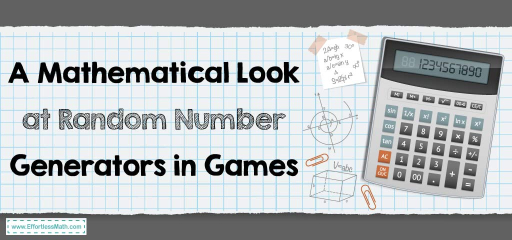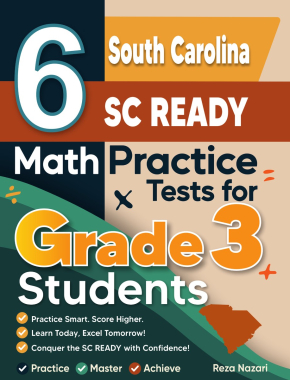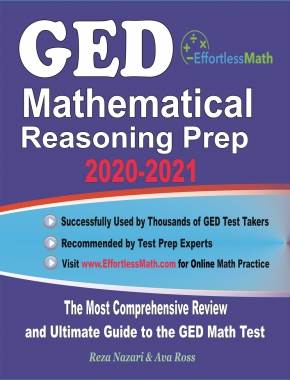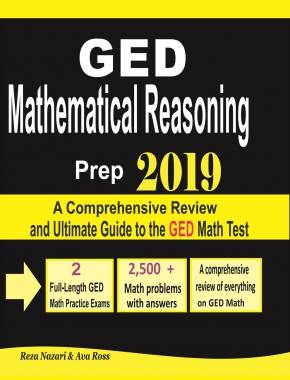A Mathematical Look at Random Number Generators in Games

Games may seem simple at first, but there is a lot of mathematics behind them. Random number generators are one of the most significant tools that make games unpredictable and engaging. These algorithms determine the outcome, make things fair, and influence the way players experience chance in both simple and complex ways.
A Genre Built on RNGs
One of the most obvious examples of how random number generators determine results is slot games. Every spin is associated with numbers that correspond to various symbols, and since the mathematics behind it is fast, the results are unpredictable.
To build trust, some online casinos USA, players can access have adopted blockchain technology. This allows them to demonstrate fairness by ensuring that the results of the games can be independently verified, as well as providing features such as anonymous play and quicker payouts. These trends demonstrate that randomness and transparency are inseparable in digital entertainment.
How RNGs Work
In the simplest sense, a random number generator is a mathematical function. Most are not actually random but pseudorandom, i.e., they begin with an initial value called a seed and then generate sequences of numbers that appear random. The quality of the generator is determined by the evenness of distribution of these numbers and their unpredictability.
Well-known algorithms include the Mersenne Twister and its variants, which can produce long sequences without repeating, and more sophisticated cryptographic RNGs that are resistant to pattern detection. In a game, these functions can repeat millions of times per second, so that each result is independent of the previous one.
Probability as a Foundation
Probability is closely related to the use of RNGs in games. Everything that occurs in a game has a probability or chance of occurrence, and the generator is there to simulate the odds. When you roll a six-sided die, the probability of getting a particular number is one-sixth. An RNG can simulate this same distribution digitally, so after thousands of rolls, the results will match the expectations.
This foundation applies to a wide variety of genres. In a role-playing game, the probability of getting rare equipment in a treasure chest can be two percent. In a strategy game, the probability of a weapon failing can be five percent. Without probability and RNGs, such events would be predictable and less interesting.
Finding a Balance between Challenge and Enjoyment
Randomness is also used by developers to balance challenge with enjoyment. A combat system in which every attack hits and every defense blocks would soon become boring, whereas one in which every attack misses and every defense fails would be frustrating. Using RNGs to modify strike opportunities or damage boosts, designers introduce a degree of uncertainty that keeps the players interested.
The same concept is found in board games that are converted to digital. A digital card shuffle or dice roll should be random enough to match the randomness of a physical one. Randomness, when used intelligently, reflects the thrill of play in the real world.
RNGs in Video Games
Most video games that are popular rely on RNGs to maintain gameplay. These algorithms determine critical hits in battle, random enemy encounters, or the random arrangement of a dungeon. This makes every session different for players.
A role-playing game in which an attack has a ten percent chance of causing twice the normal damage. Whenever you attack, the RNG determines whether the event occurs. In the long term, the outcomes match the odds, but in the short term, the unpredictability creates tension and excitement.
Even informal games employ randomness. In puzzle games, new pieces are frequently generated by RNG rules. In the absence of randomness, players would be able to memorize solutions, and the challenge factor would be eliminated.
Pseudorandom and True Random
Pseudorandom generators are efficient and reliable and are used in most digital games. They generate outputs that seem random despite obeying mathematical laws. However, there is also natural randomness, which is due to natural processes such as electronic noise or radioactive decay.
On some platforms, true RNGs are tested to add additional randomness. Although they can bring an additional layer of fairness, they are more difficult to scale. Pseudorandom generators are adequate in most gaming applications, provided the sequences are unpredictable enough to players.
Testing and Reliability
To be effective in games, RNGs must be tested. Developers use simulations with millions of results to make sure that outcomes are consistent with the expected probabilities. As an example, when a game claims that there is a 25 percent chance of a rare item drop, testing can verify that this rate is true over many trials.
Competitive gaming also depends on reliable RNGs. Players have to believe that results are not biased towards one party. Testing exposes exploits as well to make sure that randomness is functioning properly.
Procedural Generation and RNG
Procedural generation is the use of random number generators to create whole environments, levels, or scenarios in games. Rather than creating every detail manually, developers provide the algorithms with rules, and the RNG fills in the blanks.
This is how certain games create infinite maps, new dungeons, or challenges each time a player logs in. The math is such that the outcomes are random, but they still have patterns that make sense in the game world.
RNGs and Player Perception
The randomness in games not only deals with math but also with human psychology. Players tend to see patterns where there are none in terms of statistical fairness. A series of bad luck can be perceived as unfair, although the odds are not different.
This impression is occasionally mitigated by systems that smooth out randomness. An example of this is in certain games where a player has not been able to get a rare item after numerous attempts; the chances are slightly boosted until it finally occurs. This strategy is a compromise between fairness and fun, avoiding frustration without eliminating randomness.
Hardware and Performance Factors in RNG
Although random number generators are mathematical in nature, the hardware in which they run can also be a factor. RNG algorithms are run at very high speeds by processors, and the efficiency of these operations can influence the smoothness of a game. Certain platforms even have hardware-based RNG modules that derive randomness out of physical processes such as electrical noise. As a developer, it is important to know how various systems deal with randomness when creating games that require similar results on different platforms, such as consoles, PCs, and mobile devices.
Future Directions
The use of RNGs evolves with the evolution of gaming. Developers are also looking into quantum-based randomness, whereby the principles of physics are used to generate the outcomes. Some are using AI to test and refine probability systems to make the experiences smoother and more engaging.
In video games, adaptive randomness is increasingly being emphasized. This involves modifying RNGs based on how the player is playing, e.g., making the game easier after multiple failures or more unpredictable as the player becomes more powerful. Such systems demonstrate how mathematics is still influencing the future of interactive entertainment.
Conclusion
Although random number generators are not visible to the players, they influence almost every element of contemporary games. They employ math to generate randomness, mimic probability, and make every session feel different. Whether it is critical hits or puzzle piece layouts, RNGs are an unseen force that keeps games dynamic and engaging. Knowing the math behind them not only helps explain how they work but also shows why chance is such a strong element of play.
Frequently Asked Questions
What is a growing pattern?
A growing pattern in mathematics refers to a sequence that follows a specific rule, allowing each term to systematically increase or evolve. For example, in games, random number generators (RNGs) might use growing patterns to determine the progression of game elements like difficulty levels or rewards, adding an element of unpredictability and challenge. Understanding growing patterns can help players predict potential outcomes or strategies in games. This concept is fundamental in learning more complex mathematical concepts, such as arithmetic sequences and series, which are crucial for advancing in mathematical education and critical thinking.
How do you add and subtract mixed fractions?
Adding and subtracting mixed fractions involve a few simple steps that can be likened to the unpredictability in games using random number generators, though with a clear method to reach the answer. First, ensure that the fractions have a common denominator, similar to how a game aligns its outcomes based on predefined rules. Convert any mixed fractions into improper fractions (where the numerator is greater than the denominator) by multiplying the whole number by the denominator and adding the numerator. Once the fractions are uniform in their denominators, you can easily add or subtract the numerators while the denominator remains the same. Simplify the resulting fraction if necessary, and convert it back to a mixed fraction if needed. This process ensures precision and fairness in your calculations, much like the algorithms ensuring fairness in gaming outcomes.
What is the rule for a growing pattern?
In mathematics, a growing pattern refers to a sequence where numbers increase according to a specific rule or formula. This concept can be likened to the mechanisms of random number generators in games, where each new number (or game outcome) follows a defined algorithm, contributing to the pattern’s growth. For example, in a simple growing pattern, each number might be the previous number plus two. Understanding these patterns helps in predicting future elements, much like anticipating game scenarios based on RNG outputs. To help your child grasp this concept, working through practice problems involving sequences and patterns can be very beneficial. Sadly, I don’t have a relevant link to provide on this topic.
Related to This Article
More math articles
- Geometric perspective: A Deep Dive into Polar Coordinates
- How Writing Math Journals Can Boost Students’ Problem-Solving Skills
- Sum and Difference of Trigonometric Functions Formulas
- How to Motivating Disengaged Learners to Enjoy Learning Math
- The Ultimate 7th Grade MCAP Math Course (+FREE Worksheets)
- How to Decode Complexity: A Comprehensive Guide to Utilizing Bar Charts in Calculus and Beyond
- Full-Length 6th Grade PSSA Math Practice Test
- How to Study Math Effectively in College?
- How to Use Place Value Blocks to Compare Decimals
- Area of a Parallelogram
























What people say about "A Mathematical Look at Random Number Generators in Games - Effortless Math: We Help Students Learn to LOVE Mathematics"?
No one replied yet.